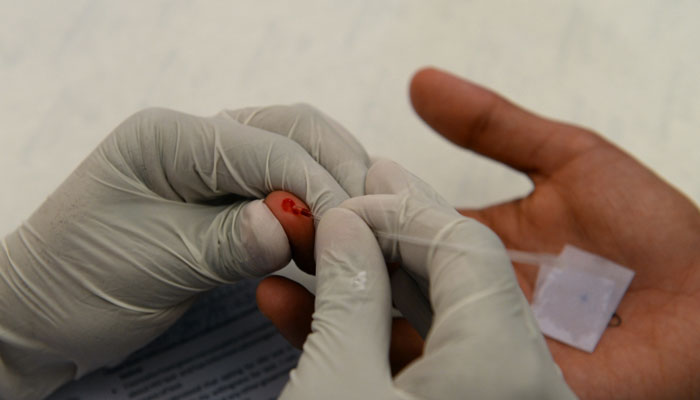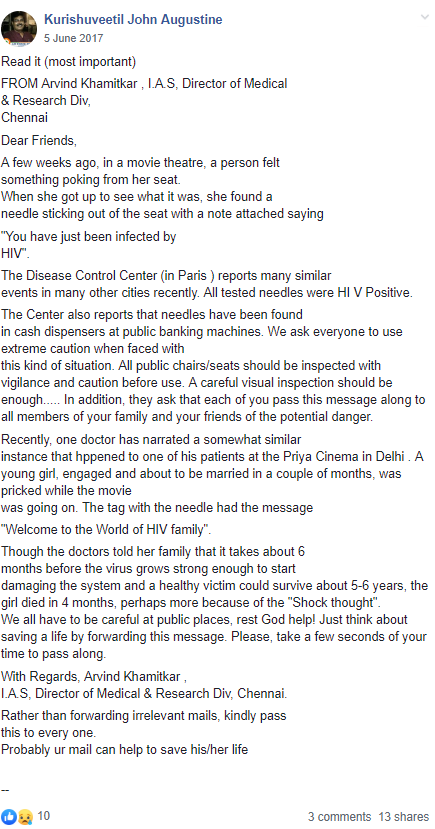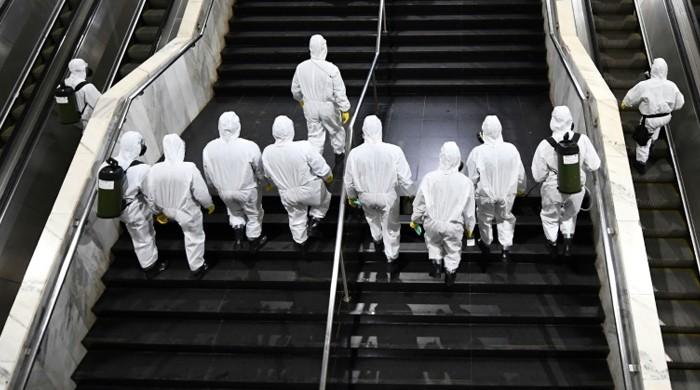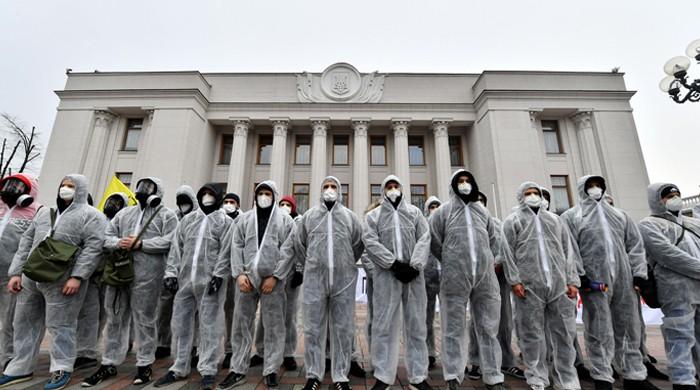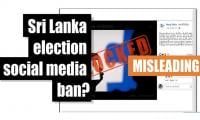Fact-check: HIV-infected needle attacks taking place in India?
Fact-check: Posts about HIV-infected needle attacks in India are part of a long-running medical hoax
Multiple Facebook, WhatsApp, and Twitter posts have shared a warning about contaminated needles being planted in public areas in India to cause multiple new cases of HIV infection. The claim is false; it is a longstanding HIV hoax which references non-existent sources; experts say that while the virus can be spread via used needles, the risk of being infected in this manner is "extremely low".
This post was shared to a Facebook group with more than 17,000 members on June 5, 2017.
The lengthy caption of the post states in part: “FROM Arvind Khamitkar, I.A.S, Director of Medical & Research Div, Chennai
“A few weeks ago, in a movie theatre, a person felt something poking from her seat. When she got up to see what it was, she found a needle sticking out of the seat with a note attached saying ‘You have just been infected by HIV’.
“The Disease Control Center (in Paris) reports many similar events in many other cities recently. All tested needles were HIV Positive. The Center also reports that needles have been found in cash dispensers at public banking machines.
“Recently, one doctor has narrated a somewhat similar instance that happened to one of his patients at the Priya Cinema in Delhi. A young girl, engaged and about to be married in a couple of months, was pricked while the movie was going on. The tag with the needle had the message ‘Welcome to the World of HIV family’.
“Though the doctors told her family that it takes about 6 months before the virus grows strong enough to start damaging the system and a healthy victim could survive about 5-6 years, the girl died in 4 months”.
HIV, or human immunodeficiency virus, attacks the body’s immune system, and if untreated, can lead to acquired immunodeficiency syndrome, or AIDS, according to the World Health Organisation (WHO).
WHO’s 2018 data indicates nearly 38 million people worldwide were living with HIV.
The text post has been shared among India-based social media users, such as here, here and here on Facebook and here, here and here on Twitter.
Below is a screenshot of the misleading post:
The claim is false; it is one of the decades-old HIV hoaxes that have been localised in social media posts, emails and websites across the globe.
Old HIV hoaxes
The misleading post has been circulating online for at least 13 years, for example in this April 2006 post on India Forums.
The forum had some 900,000 registered members in 2017.
The hoax plays on real-world events in South Asia, for example in 2018, a fake doctor infected dozens of people with HIV in the Indian state of Uttar Pradesh, and in 2011, Indian activist Anna Hazare was threatened with HIV needles, according to Reuters and The Times of India.
In neighbouring Pakistan, hundreds of people, most of them children, in a southern province were tested HIV positive after a contaminated syringe was used on them, AFP reported in 2019.
HIV transmission myths aren’t confined to the India-Pakistan region. AFP Fact Check has previously debunked HIV-related disinformation from different parts of the world.
For example, here is an AFP fact-check debunking claims about HIV-contaminated bananas, and here is another AFP fact-check about HIV-infected Cadbury’s products.
Claims similar to the misleading post, with slight alterations to the name of the medical personnel who wrote the “letter”, the country and the public space where the “infection” took place, have also been previously debunked by fact-checkers from India to America, such as here and here by India’s India Today and Navbharat Times, here and here by US’ Politifact and Snopes, and here by Australia’s Hoax-Slayer.
Expert opinion
According to the US Centers for Disease Control and Prevention (CDC), a federal agency, HIV can indeed be passed on from a person with HIV to another via a used needle, on the condition that the needle contains certain types of body fluids that can transmit the virus.
The CDC states on its website: “Only certain body fluid -- blood, semen (cum), pre-seminal fluid (pre-cum), rectal fluids, vaginal fluids, and breast milk -- from a person with HIV can transmit HIV. Most commonly, people get or transmit HIV through sexual behaviors and needle or syringe use.”
The virus is relatively fragile, according to the University of California, Santa Barbara:
“HIV is a fragile virus and will not survive outside the body long enough for transmission from the air, in water or other surfaces. There is no chance of transmitting HIV through sexual activities that do not involve direct contact of semen, vaginal secretions, or blood with mucous membranes.”
The CDC and a paper entitled “Needle stick injuries in the community” published in the medical journal Paediatrics & Child Health listed certain conditions that determine the likelihood of HIV transmission by contaminated needles:
“HIV can live in a used needle up to 42 days depending on temperature and other factors.”
“The size of the needle, the depth of penetration and whether blood was injected are also important considerations. In most reported instances involving transmission of HIV, the needle stick injury occurred within seconds or minutes after the needle was withdrawn from the source patient.”
Despite the relatively low possibility of HIV transmission, used needles found in public space remains a cause of concern for many. However, the CDC and the paper say the statistics of people infected with HIV due to needlestick injuries or by discarded, used needles in public places are very low:
“Scientists estimate that the risk of HIV infection from being stuck with a needle used on a person with HIV is less than one percent.”
“The risk of acquisition of HIV from a hollow-bore needle with blood from a known HIV seropositive source is between 0.2 percent and 0.5 percent, based on prospective studies of occupational needlestick injuries. The risk is increased with higher viral inoculum, which is related to the amount of blood introduced and the concentration of virus in that blood.”
Australia’s Department of Health has also addressed the issue:
“To date, there are no published reports of HIV, hepatitis C or hepatitis B infection being acquired by a member of the public after injury from a discarded used needle in the community in Australia. If you do tread on a needle and syringe, don't panic, the risk of infection is extremely low.”
Non-existent doctor
The misleading post is purportedly written by an Arvind Khamitkar, who is described as the I.A.S. Director of Medical & Research Div in Chennai, the capital of the Indian state of Tamil Nadu.
IAS in India stands for the Indian Administrative Service, an administrative department that serves the government of India as well as the individual states.
A search on IAS’s portal shows no record of any Arvind Khamitkar on its officer database.
Below is a screenshot of the search:
IAS officer Dev Choudhary told AFP via Facebook Messenger on November 13, 2019, “There is no IAS officer with the name Arvind Khamitkar. It seems fake.”
Indian newspaper Navbharat Times debunked in a similar claim in 2018 and stated in its report: “There is no institute named ‘Medical and Research Division’ in Tamil Nadu. The second most shocking thing is that there is no IAS officer named Arvind Khamitkar in Tamil Nadu. That is, the source of the news is fake.”
Fake disease centre
The false claim also references a Paris-based “Disease Control Center” concerning similar cases of HIV infections that stemmed from needles left in public places.
The Disease Control Center translates to French as centre de contrôle des maladies.
AFP conducted a keyword search on the website of Santé publique France, the nation’s public health agency under the Ministry of Health.
The search on “centre de contrôle des maladies”, confined to the region of Île-de-France, where Paris is located, yielded only one result, about incidents of food poisoning at a Paris hospital in 2001.
AFP ran another keyword search on Google including all of the following words: “Santé publique France” and “centre de contrôle des maladies".
None of the top results mentioned any such centre in Paris, but pointed towards the Sweden-based Centre européen de prévention et de contrôle des maladies, or European Centre for Disease Prevention and Control (ECDC), and the US-based CDC.
The ECDC is an European Union agency established to “identify, assess and communicate current and emerging threats to human health posed by infectious diseases,” according to its website.
It is located near Stockholm, Sweden.
The CDC is the US’ national public health institute under the Department of Health and Human Services aimed to “protect America from health, safety and security threats, both foreign and in the US.”
It is based in Atlanta, Georgia.
-
Fact-check: Pakistan's PM wears Sikh turban?
-
Fact-check: Sri Lanka election social media ban?
-
Fact-check: Misleading web posts add fuel to Bolivia crisis
-
Chinese official's wife shot dead during US trip?
-
Fact-check: Traffic light in Indonesia uses video mapping technology?
-
Fact-check: A photo of the oldest tortoise in Africa?
-
Fact-check: Canadian elections 2019: 35 million ballots printed, not votes counted
-
Fact-check: Eating a no-sugar diet does not cause cancer cells to 'die naturally'
